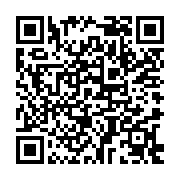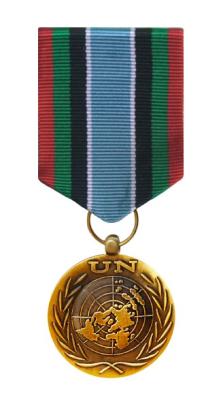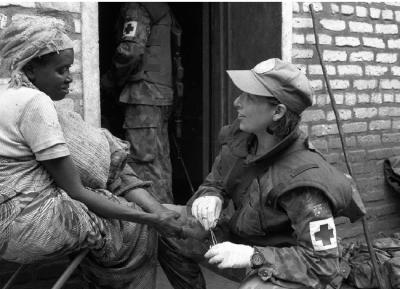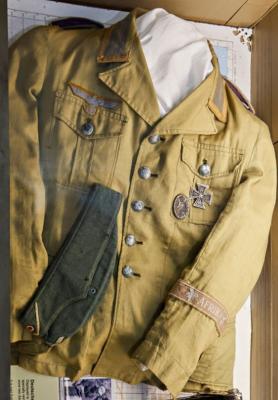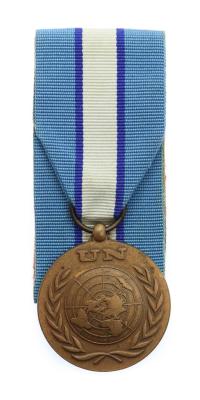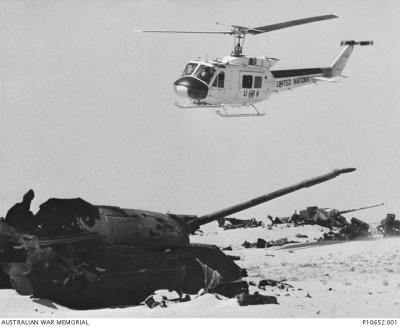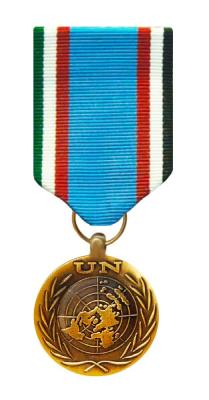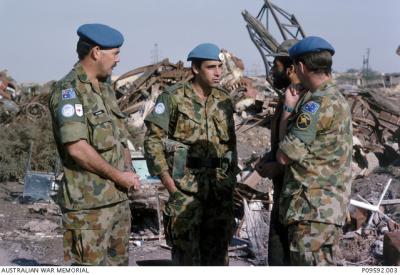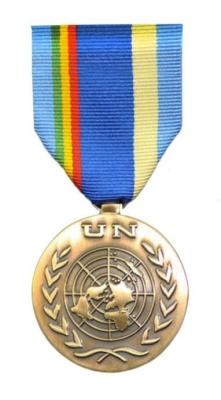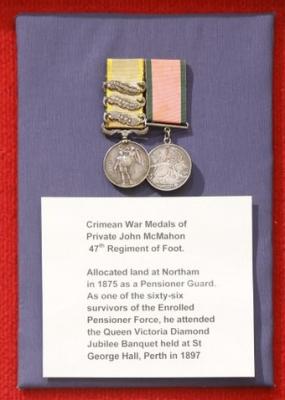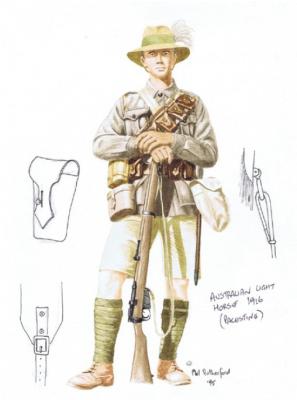Post 1945, Peacekeeping, The United Nations Temporary Executive Authority in West New Guinea (UNTEA), 1962 - 63
UNTEA was established to supervise the transfer of West New Guinea from Dutch colonial rule to Indonesian administration. It operated from October 1962 to April 1963 and marked the first time in its history that the UN had temporary executive authority over a territory.
UNTEA's role was to maintain law and order alongside the Papuan police, protect the rights of the Papuan people and ensure normal services continued until 1 May 1963. After that point, West New Guinea would be under the administration of Indonesia.
The western half of the island of New Guinea, West New Guinea had been under Dutch control since 1828 After World War II ended in 1945, Indonesia declared its independence from the Netherlands. The Netherlands recognised Indonesia's independence in 1949 and agreed to transfer control of the former Dutch East Indies to Indonesia, except for West New Guinea.
The status of West New Guinea, (also known as West Irian), remained undecided. Tensions escalated in early 1962 when Indonesian paratroopers landed in West New Guinea, which at that time was still under Dutch control. Fearing an outbreak of war, the UN brokered an agreement between the two nations which stated that the Dutch would leave West New Guinea and transfer sovereignty to a UN trusteeship. A national vote would be held at a future date for Papuans to decide if they wanted to integrate with Indonesia or become an independent state.
In late September 1962, an outbreak of cholera was detected in West New Guinea on the Casuarina Coast, west of Merauke. The outbreak had already claimed 1,200 lives by the time a World Health Organization medical team arrived. UNTEA asked Australia for a helicopter and pilot to help transport medical supplies and personnel to and from the affected area. Concerned about the outbreak spreading to the neighbouring Australian-administered Territory of Papua and New Guinea, Australia agreed to assist.
A detachment of 11 personnel was drawn from the No. 16 Army Light Aircraft Squadron, based at RAAF Base Amberley in Queensland. The small team consisted of 4 Army pilots and 7 RAAF ground crew, along with 2 Australian Army Bell H-13 Sioux helicopters. The Australian operation did not have a codename.
Details
Details
National Peacekeepers' Day: On 14 September each year, Australia observes National Peacekeeper’s Day, the anniversary of Australia becaming the world's first peacekeepers to deploy into the field, in the Netherlands East Indies in 1947.
International Day of UN Peacekeepers: 29 May is a day of commemoration and acknowledgement of all military, police and civilian personnel who have served as peacekeepers with the UN. Since UN peacekeeping began, more than 4,000 peacekeepers from many countries have lost their lives while performing their duties under the UN flag.
Open in Google Maps
Nearest geotagged records:
Australian Army Museum of Western Australia
Australian Army Museum of Western Australia
Other items from Australian Army Museum of Western Australia
- Medal, Post 1945, Peacekeeping, United Nations Assistance Mission for Rwanda (UNAMIR and UNAMIR II)
- Post 1945, Peacekeeping, United Nations Assistance Mission for Rwanda (UNAMIR and UNAMIR II) 1993-96
- Post 1945, Western Australia, Folding Boat, Special Air Service Regiment
- World War 2, North Africa, Western Desert, German Africa Corps Tunic, 1942
- Medal, Post 1945, Peacekeeping, United Nations Force in Cyprus, 1964 - 2021
- Post 1945, Australia, Soldier's Field Equipment Display, 1990 - 2010
- Post 1945, South West Asia, Sinai, Peacekeeping, United Nations Emergency Force II, 1976 - 79
- Medal, Post 1945, Peacekeeping, United Nations Iran-Iraq Military Observor Group, 1988 - 1991
- Post 1945, Iran and Iraq, Peacekeeping, United Nations Iran-Iraq Military Observor Group, 1988 - 1991
- Medal, Post 1945, Peacekeeping, United Nations Multidimensional Integrated Stabilization Mission in Mali (MINUSMA), 2013 - 2023
- Medal Group, Pre 1914, Crimea, McMAHON, Western Australia Pensioner Guard
- World War 1, South West Asia, Sinai, Light Horse,1916
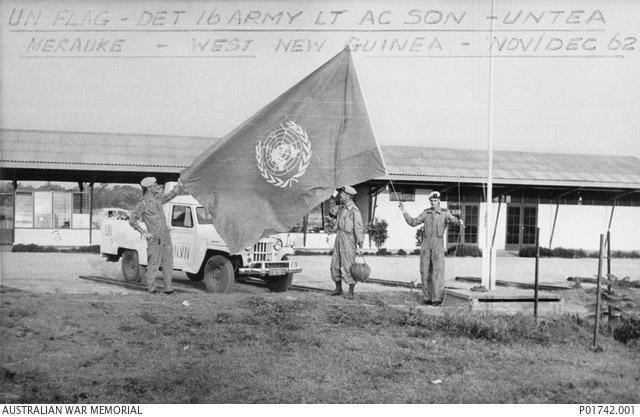
Scan this QR code to open this page on your phone ->
